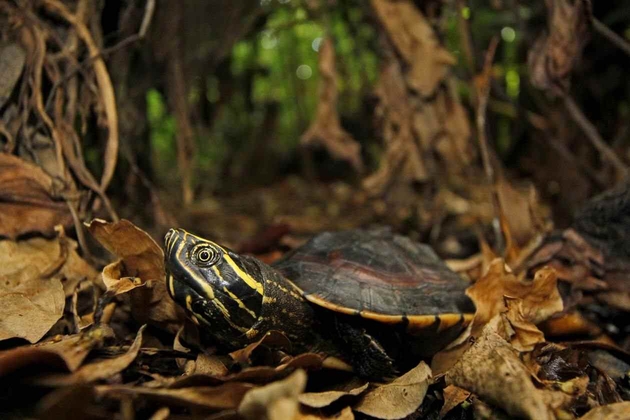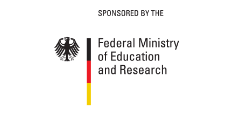Using genetic and morphological analyses the team revealed the genus Malayemys to comprise three instead of two distinct species as previously recognized. Therefore the researchers examined more than 100 turtles from Mainland Southeast Asia. The initial objective of this study was to determine whether the two recognized species represent genetically distinct species at all, as genetic analyses sometimes reveal putative species to actually represent a single morphologically variable species. Flora Ihlow, PhD student at the Herpetology Section of the ZFMK was particularly surprised when “genetic data revealed a third, so far completely overlooked species”. Further analyses demonstrated that the new species also differs in morphology. Each of the three species exhibits its own unique facial pattern, by which they can easily be distinguished. “Integrative approaches which combine morphology and modern molecular genetic techniques have become indispensable for the detection of new species” explains Prof. Dr. Uwe Fritz, head of the Museum für Tierkunde of the Senckenberg Naturhistorischen Sammlungen Dresden.
The genus Malayemys now contains three species of relatively small turtles with a maximum carapace length of 22 cm, which inhabit shallow water bodies across the Southeast Asian lowlands. These turtles seem to be fairly synanthropic and “with a little luck, one can spot turtles of the genus Malayemys in rice paddies, temple ponds, and canals even in the heart of big cities such as Bangkok or Siem Reap” says Ihlow. According to Ihlow, “all three species are hunted and traded for food and religious purposes, which threatens the populations”. Nevertheless, the protective status of the two previously recognized species is low. “The description of the new species will require a re-evaluation of the protective status, since each species now has a smaller distributional range”, says Ihlow. Furthermore, future conservation measures such as conservation breeding and reintroduction programs will have to reconsider the new findings and chose their stock specimens accordingly.
The new species Malayemys khoratensis seems to be restricted to the eponymous Khorat Plateau in northeastern Thailand. “Hitherto, M. khoratensis is known from catchments of a few rivers only”, explains Timo Hartmann, also PhD student in the herpetology section of the ZFMK.
Male specimen of the newly described species Malayemys khoratensis from Sikhio, northeastern Thailand. Foto: F. Ihlow.
Adult specimen of Malayemys subtrijuga from the Tonlé Sap lake, central Cambodia. Foto: F. Ihlow
Malayemys macrocephala from Tap Than, central Thailand. Foto: F. Ihlow.
Source/ Publication
Ihlow, F., Vamberger, M., Flecks, M., Hartmann, T., Cota, M., Makchai, S., Meewattana, P., Dawson, J.E., Kheng, L., Rödder, D., Fritz, U. (2016) Integrative Taxonomy of Southeast Asian Snail-eating Turtles (Geoemydidae: Malayemys) unravels a new species and mitochondrial introgression. –PLoS One,
DOI: 10.1371/journal.pone.0153108.
Contact:
Flora Ihlow
Sektion Herpetologie
Zoologisches Forschungsmuseum Alexander Koenig, Bonn
Tel. 0228 - 9122253
F.Ihlow [at] zfmk.de
Prof. Dr. Uwe Fritz
Senckenberg Naturhistorische
Sammlungen Dresden
Tel. 0351 - 795841 4328
Uwe.Fritz [at] senckenberg.de
--------
Das Zoologische Forschungsmuseum Alexander Koenig - Leibniz-Institut für Biodiversität der Tiere hat einen Forschungsanteil von mehr als 75 %. Das ZFMK betreibt sammlungsbasierte Biodiversitätsforschung zur Systematik und Phylogenie, Biogeographie und Taxonomie der terrestrischen Fauna. Die Ausstellung „Unser blauer Planet“ trägt zum Verständnis von Biodiversität unter globalen Aspekten bei.
Zur Leibniz-Gemeinschaft gehören zurzeit 88 Forschungsinstitute und wissenschaftliche Infrastruktureinrichtungen für die Forschung sowie drei assoziierte Mitglieder. Die Ausrichtung der Leibniz-Institute reicht von den Natur-, Ingenieur- und Umweltwissenschaften über die Wirtschafts-, Sozial- und Raumwissenschaften bis hin zu den Geisteswissenschaften. Leibniz-Institute arbeiten strategisch und themenorientiert an Fragestellungen von gesamtgesellschaftlicher Bedeutung Bund und Länder fördern die Institute der Leibniz-Gemeinschaft daher gemeinsam. Näheres unter www.leibniz-gemeinschaft.de










